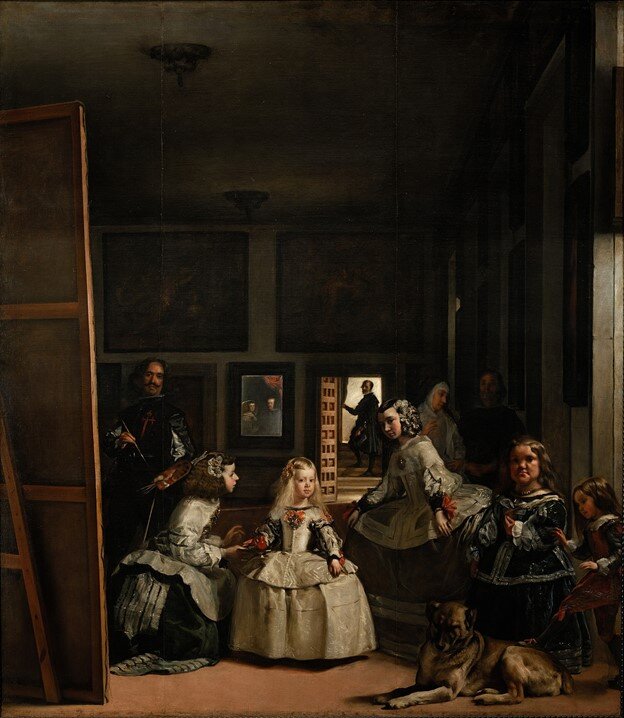Consanguinity, genetics and art in the royal families of Europe, Part 1
Genetics and Art: a series with Dr. Bassem Bejjani
Dr. Bejjani is a medical geneticist who has practiced in academic and private settings for more than 30 years and published around 100 peer-reviewed papers in the genetics and genomics field. He is the Chief Medical Officer of Metis Genetics. He is past Chair of the Washington State Arts Commission and Vice President of Caravan, an interfaith art organization. He currently serves on the boards of WESTAF (Western States Art Federation) and The Henry Art Gallery at the University of Washington. Dr. Bejjani will discuss the interplay between the worlds of genetics and art in this blog series.
Consanguinity, genetics and art in the royal families of Europe, Part 1
The word consanguinity comes from the Latin consanguineus, meaning “of common blood”. People that are consanguineous are descended from the same ancestors. The frequency of consanguineous marriages (marriages between blood relations) varies across the world. While inbreeding is now considered taboo in the industrialized west where it was once common, it is still widely accepted in many cultures. The highest inbreeding levels and frequencies of inbred individuals are found in populations of the Middle East, Central South Asia and the Americas.¹
The origin of negative Western attitudes toward consanguinity extends back over 1,500 years and is attributed to Pope Gregory I’s (540-604) ban on first-cousin marriage, based on his interpretation of Leviticus 18:6, “none of you shall approach to any that is near kin to him, to uncover their nakedness.” Current data indicate that some 10.4% of the global population are related as second cousins or closer.²
Consanguinity in the royal families of Europe
In Europe, the House of Habsburg, one of most prominent royal houses in the second millennium, sought to consolidate their power and wealth through frequent consanguineous unions that may have had a negative effect on their health. Indeed, the end of the reign of the Habsburg is often attributed to the progressive damaging effect of relentless inbreeding on successive generations of rulers who suffered from poor health, mental illness, intellectual disabilities, and dysmorphic features.³
Charles II of Spain (Carlos Segundo), known as “The Bewitched” (El Hechizado) because of his physical deformities and intellectual limitations, seems to have been particularly affected by several ailments, some of which were documented on the canvas by successive artists (see Figures 1 and 2 below, as well as link 1 and link 2), and by contemporary observers. Francesco Niccolini, the Apostolic Nuncio to Portugal, described the 25-year-old king as “short rather than tall, not badly formed, ugly of face; he has a long neck, a long face that curves inwards; the lower lip typical of the House of Austria. He can’t straighten his body, rather when he walks, he curls up against a wall, a table or something else. His body is as weak as his mind. Occasionally, he shows some intelligence, memory or liveliness but not now; in general, he has a slow and indifferent demeanor, clumsy and indolent, appearing stupefied. One can do what they like with him, as he lacks his own will.”⁴
Figure 1, a Portrait of Charles II of Spain by Juan Carreño de Miranda
The examination after his death at 38 years of age reportedly noted that “his heart was the size of a peppercorn; his lungs corroded; his intestines rotten and gangrenous; he had a single testicle, black as coal, and his head was full of water.” Several authors speculated about a number of conditions that may have affected the unfortunate King, most of them genetic, such as pituitary hormone deficiency, distal renal tubular acidosis, Klinefelter syndrome, fragile X syndrome, or male XX hermaphroditism, and hydrocephalus.⁵
Figure 2, a Portrait of Charles II of Spain by Wilhelm Humer
Consanguinity and genetic conditions in famous artwork
Margaret Theresa of Spain (1651-1673) was King Charles’ II older full sister. While she shared some of his dysmorphic features, especially the pronounced prognathism (the Habsburg jaw),⁶ she is mentioned here because of her famous portrait by Diego Velasquez, “Las Meninas” (Figure 3), one of the most analyzed works in Western art, which also depicts two other subjects with genetic conditions. The short man in the right lower corner of the painting was a court dwarf, Nicolás Pertusato, playfully trying to rouse a sleepy mastiff with his foot. Next to him, stands Mari Bàrbola, a German woman with achondroplasia. A discussion of this complex painting is beyond the scope of this blog, but the reader is advised to spend some time admiring this exceptional painting online or at the Museo Nacional del Prado in Madrid. Pablo Picasso did, and in 1957 he created a series of 58 variations that are a testament to one of the most important works in the history of Spanish painting. These paintings are preserved at the Museu Picasso de Barcelona.
Figure 3, “Las Meninas” by Diego Velasquez
It is recognized in history that royal European families would engage in consanguineous marriages in order to keep their power and wealth within the family. This practice has also been documented to occur in other civilizations, such as that of ancient Egypt, in which Cleopatra is known to have married two of her brothers.⁷ As stated earlier, inbreeding is still widely accepted in many cultures today. Consanguinity, or inbreeding, can give rise to a host of medical issues and genetic diseases. Please return shortly for Part 2 of this blog, in which we will discuss the effects of consanguinity on health, how genetics is related, and what healthcare providers need to look out for in terms of consanguinity in modern times.
References:
1. A. Leutenegger et al. Consanguinity around the world: what do the genomic data of the HGDP-CEPH diversity panel tell us? European Journal of Human Genetics (2011) 19, 583–587.
2. A. H. Bittles et al. Consanguinity, human evolution, and complex diseases. PNAS January 26, 2010; 107 (suppl 1) 1779-1786; https://doi.org/10.1073/pnas.0906079106.
3. G. Alvarez et al. The Role of Inbreeding in the Extinction of a European Royal Dynasty. PLoS One. 2009; 4(4): e5174. https://doi.org/10.1371/journal.pone.0005174.
4. https://english.elpais.com/elpais/2019/12/03/inenglish/1575367613_121836.html
5. M.D. Turliuc et al. Hydrocephalus of King Charles II of Spain, the Bewitched King. Eur Neurol 2019;81:76–78. https://doi.org/10.1159/000500719.
6. https://commons.wikimedia.org/wiki/File:Margarita_Teresa_of_Spain.jpg
7. Middleton, R. (1962). Brother-Sister and Father-Daughter Marriage in Ancient Egypt. American Sociological Review, 27(5), 603–611. https://doi.org/10.2307/2089618.




